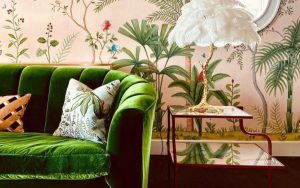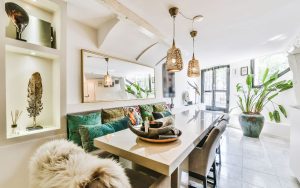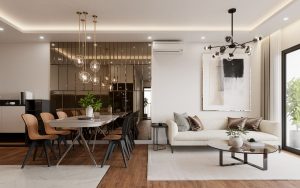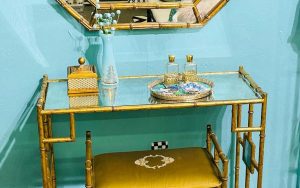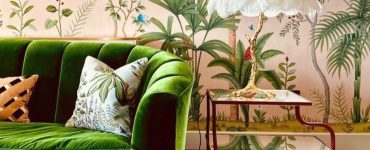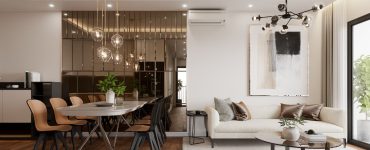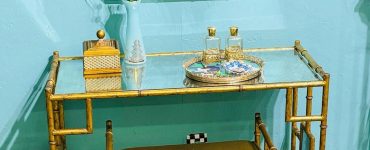Art Deco and Hollywood Regency, two iconic design styles that have left an indelible mark on the history of art, architecture, and interior design. With their origins deeply rooted in the early 20th century, these styles continue to inspire and enchant design enthusiasts and professionals alike, even in the modern era.
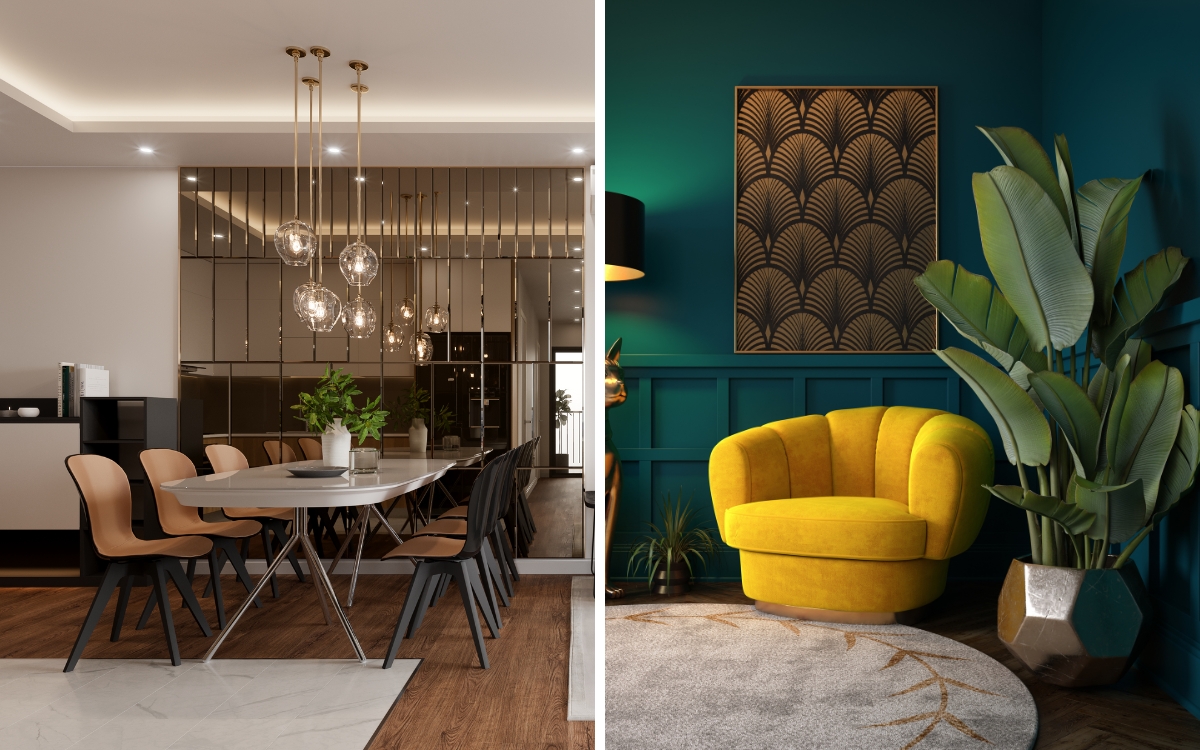
In this blog post, we embark on a journey of discovery as we unravel the classic connection between Art Deco and Hollywood Regency. Both styles emerged during a time of opulence and optimism, drawing from the glitz and glamour of their respective eras. We will explore the defining features and characteristics of each style, delving into the ways they have shaped the creative industries, leaving their distinct imprints on architecture, fashion, cinema, and more.
Art Deco: A Glimpse into the Glamorous Past
In the early 20th century, a new and dazzling design style emerged, leaving an indelible mark on the world of art, architecture, and interior design – Art Deco. This enchanting movement originated in the 1920s and reached its peak in the 1930s, encompassing an era of opulence, prosperity, and artistic expression.
Origins and Historical Context of Art Deco
At its core, Art Deco was a celebration of modernity, characterized by a departure from the ornate and intricate styles of the past. The term “Art Deco” is derived from the 1925 International Exhibition of Modern Decorative and Industrial Arts held in Paris, which became a pivotal moment for the movement. The exhibition showcased the fusion of various art forms and inspired a new wave of design that epitomized progress and luxury.
Art Deco drew inspiration from a diverse range of sources, including the bold geometric forms of Cubism, the exotic motifs of Ancient Egypt and Africa, and the streamlined aesthetics of modern machinery. This eclectic blend of influences gave rise to a unique and alluring design language that resonated with the spirit of the Jazz Age.
Characteristics and Defining Features of Art Deco Design
At first glance, Art Deco captivates with its symmetrical lines, bold shapes, and geometric patterns. The style emphasized sleekness and simplicity, favoring clean lines over intricate embellishments. Geometric motifs such as sunbursts, zigzags, and chevrons were prevalent, infusing a sense of energy and movement into the design.
Luxurious materials were central to the Art Deco aesthetic. Shimmering metals like chrome, stainless steel, and brass added a touch of opulence, while exotic woods, lacquer, and marble elevated the sense of refinement. These lavish materials were skillfully crafted into furniture, lighting fixtures, and architectural elements, creating an air of exclusivity and sophistication.
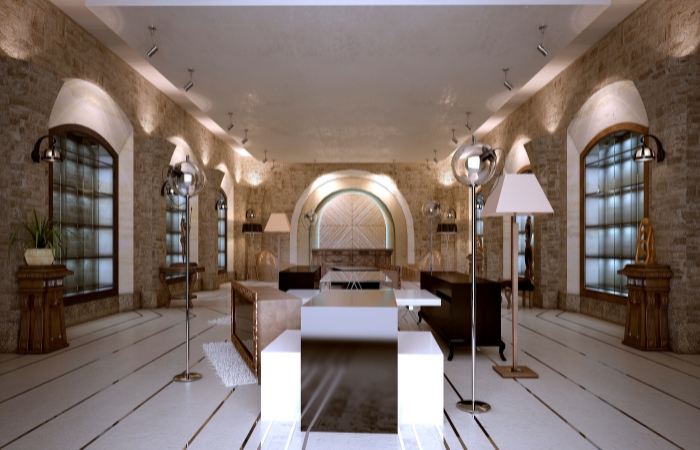
Influence of Art Deco in Various Industries
Art Deco’s influence extended far beyond the realm of interior design. The movement had a profound impact on diverse industries, including architecture, fashion, and the visual arts.
In architecture, Art Deco buildings often featured bold, geometric facades, showcasing an expression of progress and modernity. Iconic structures like the Chrysler Building in New York City and the Palais de Tokyo in Paris exemplify the movement’s impact on skylines worldwide.
Art Deco’s influence in fashion can be seen in the sleek, elegant silhouettes of the era’s clothing, as well as in the intricate patterns and decorative elements in textiles and accessories.
Moreover, Art Deco left an indelible mark on the world of cinema. Hollywood adopted the style, infusing its film sets with the grandeur and glamour synonymous with the era. This resulted in a visual language that celebrated luxury and extravagance, further popularizing the Art Deco aesthetic.
Hollywood Regency: Embracing Hollywood’s Golden Era
In contrast to the streamlined elegance of Art Deco, Hollywood Regency emerged as a style that embraced the extravagant and theatrical allure of Hollywood’s Golden Age. Born in the glamorous 1930s and influenced by the opulent film sets and lifestyle of Hollywood’s elite, this design movement brought the allure of the silver screen into the realms of interior design.
Tracing the Roots of Hollywood Regency Style
Hollywood Regency drew inspiration from the lavish film sets and lifestyles of Hollywood’s most revered stars during the 1930s and 1940s. It was a celebration of luxury, indulgence, and unapologetic glamour, mirroring the charisma and magnetism of the entertainment industry’s golden era.
Unlike other design styles that primarily looked to history for inspiration, Hollywood Regency took inspiration from contemporary sources. It embraced the essence of the Hollywood lifestyle, where stars like Marilyn Monroe, Clark Gable, and Audrey Hepburn epitomized the glitz and glamor that the movement sought to capture.
Key Elements that Define Hollywood Regency Design
At the heart of Hollywood Regency lies an unabashed love for drama and grandeur. The style is characterized by bold color palettes, luxurious textures, and statement-making pieces that demand attention. It effortlessly combines traditional and modern aesthetics, creating spaces that feel both timeless and fresh.
A hallmark of Hollywood Regency design is its use of color. Rich jewel tones, such as deep emerald greens, sapphire blues, and regal purples, are often featured prominently. These colors lend an air of sophistication and create a striking contrast against the neutral backgrounds.
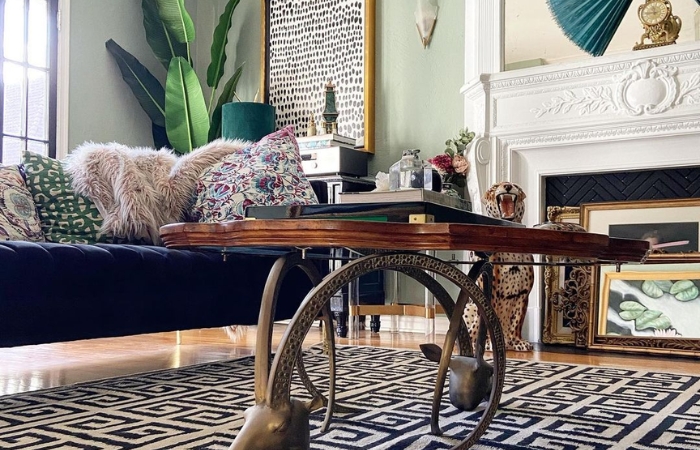
Fusion of Modern and Classic Aesthetics
One of the defining features of Hollywood Regency is its ability to blend modern and classic elements seamlessly. The style often incorporates sleek and contemporary furniture alongside more traditional, ornate pieces. This fusion creates a dynamic and visually compelling environment, where contrasts add depth and interest to the space.
Moreover, Hollywood Regency places a strong emphasis on texture and pattern. Luxurious materials like velvet, silk, and faux fur abound, adding a tactile dimension to the design. Ornate patterns, including Greek key motifs, animal prints, and chinoiserie, contribute to the extravagant and eclectic atmosphere.
The Role of Hollywood in Popularizing the Style
The burgeoning film industry in Hollywood not only influenced global entertainment but also had a significant impact on interior design trends. As movie stars and filmmakers sought to create glamorous and luxurious homes, the Hollywood Regency style gained traction.
Film sets and iconic movie scenes featuring lavishly decorated interiors further cemented Hollywood Regency’s popularity. The allure of Hollywood’s elite lifestyle, coupled with the fantasy and escapism offered by the movies, made the style irresistible to those seeking a touch of opulence in their own homes.
The Intersection: Art Deco and Hollywood Regency Merge
In the realm of design, where two influential styles converge, magic happens. Art Deco and Hollywood Regency, each with its distinct charm and allure, find a harmonious fusion at their intersection. This unique amalgamation takes the best of both worlds, infusing interiors with an opulence that harks back to the golden age of Hollywood while retaining the streamlined elegance of Art Deco.
Exploring the Overlap between the Two Design Styles
At first glance, one might wonder how Art Deco and Hollywood Regency, with their seemingly disparate characteristics, can seamlessly merge. The answer lies in their shared appreciation for luxury, sophistication, and captivating aesthetics. Both styles draw inspiration from the glamorous past and seek to create spaces that exude a sense of grandeur and allure.
While Art Deco showcases geometric lines and sleek materials, Hollywood Regency embraces drama and indulgence through bold color palettes and lavish textures. These common threads provide the foundation for a beautiful partnership, where the distinctiveness of each style accentuates the other’s unique features.
Despite their differences, Art Deco and Hollywood Regency share several elements that facilitate their graceful convergence. Both styles prioritize statement pieces that command attention and serve as focal points within a space. Whether it’s an Art Deco-inspired geometric chandelier or a Hollywood Regency-style tufted velvet sofa, these pieces instantly elevate the ambiance of a room.
Reflective surfaces and metallic accents are another unifying aspect. Art Deco’s love for sleek metals intertwines with Hollywood Regency’s affinity for mirrors and reflective materials, amplifying light and adding a touch of glimmer to the design.
Emphasis on Luxury and Sophistication
At the core of the Art Deco and Hollywood Regency fusion lies an unwavering commitment to luxury and sophistication. The blend of opulent materials, such as velvets, silks, and metals, with plush textures and sumptuous patterns, evokes a sense of indulgence and glamour that transports us back to the golden era.
The synergy of both styles is evident in their shared pursuit of creating interiors that exude a sense of timelessness and elegance. Each element, thoughtfully chosen and masterfully incorporated, contributes to an overall ambiance of refined luxury.
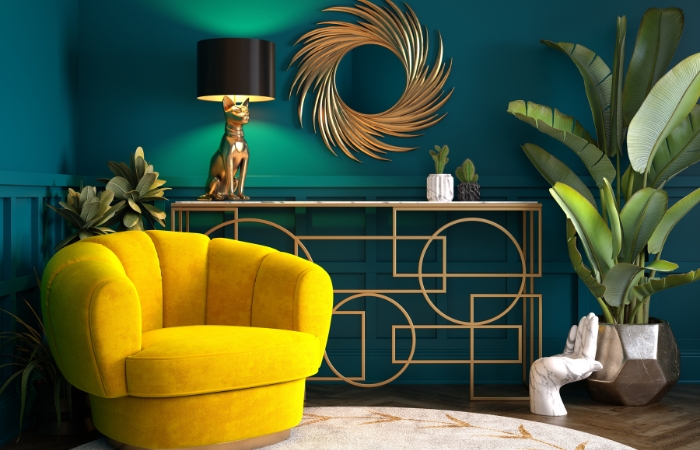
Iconic Examples of Spaces that Embody the Classic Connection
Throughout history, architects, designers, and tastemakers have skillfully merged Art Deco and Hollywood Regency to create awe-inspiring spaces that stand the test of time. From lavish hotels and private residences to iconic film sets, these spaces have become benchmarks of the classic connection between the two styles.
In these interiors, bold Art Deco elements blend effortlessly with Hollywood Regency’s plush furnishings and extravagant accessories. The resulting spaces transcend eras, offering a glimpse into a world where the past meets the present in perfect harmony.
Incorporating Art Deco and Hollywood Regency in Modern Interiors
As the timeless allure of Art Deco and Hollywood Regency continues to captivate design enthusiasts, many individuals are eager to infuse their modern interiors with the opulence and glamour of these classic styles. While honoring the history and essence of both Art Deco and Hollywood Regency, integrating these elements into contemporary spaces requires a thoughtful approach that balances nostalgia with a fresh perspective.
How to Bring Art Deco Elements into Your Home
Furniture and Lighting Choices
When incorporating Art Deco elements into modern interiors, focus on furniture and lighting that embrace clean lines and geometric forms. Opt for sleek, streamlined seating, such as sofas and armchairs with curved silhouettes or sharp angles. Look for statement pieces adorned with Art Deco-inspired motifs, like sunbursts or stepped designs.
For lighting, choose fixtures with Art Deco features, such as chandeliers with geometric crystal patterns or sleek sconces that exude elegance. Brass and chrome finishes are classic choices that add a touch of sophistication to the space.
Patterns and Textiles Inspired by the Era
Art Deco patterns play a crucial role in capturing the essence of this style. Introduce bold geometric patterns through area rugs, throw pillows, and decorative accessories. Think about incorporating contrasting colors like black, white, and gold, and consider using Art Deco-inspired wallpaper or textiles as accent walls or curtains.
Art Deco-Inspired Color Schemes
While Art Deco allows for a wide range of colors, consider using a combination of bold hues and soft neutrals to create a balanced and sophisticated look. Embrace rich jewel tones like emerald green, deep sapphire blue, and ruby red alongside luxurious metallics like gold and silver.
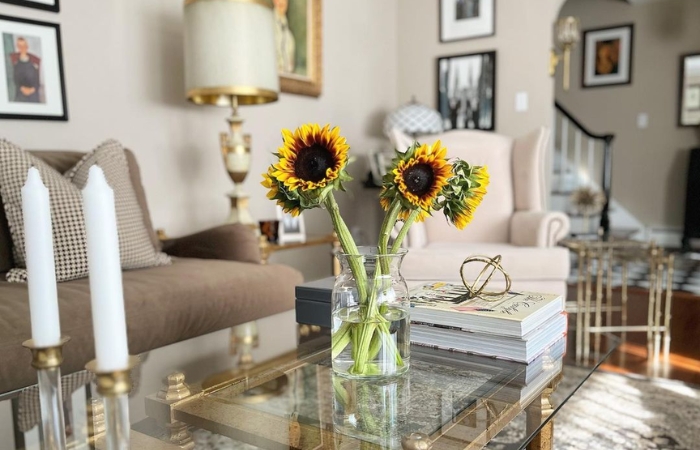
Infusing Hollywood Regency Charm into Your Living Spaces
Creating a Sense of Drama with Bold Colors
Hollywood Regency is synonymous with bold and luxurious colors. Infuse your modern interiors with dramatic shades like royal purple, regal blue, or opulent emerald. Consider painting an accent wall or incorporating vibrant upholstery to add depth and drama to the space.
Accessorizing with Hollywood Regency-Style Decor
Accessorizing plays a crucial role in bringing Hollywood Regency flair to your home. Incorporate plush cushions, faux fur throws, and velvet curtains to add texture and comfort. Mirrors, whether in sleek frames or elaborate sunburst designs, amplify light and create an air of elegance.
Balancing Modern and Classic Elements for a Cohesive Look
The key to successful integration is achieving a harmonious balance between modern and classic elements. Mix Art Deco and Hollywood Regency pieces with contemporary furniture and decor, allowing each style to complement and enhance the other.
Consider the overall layout and composition of the space, ensuring that the fusion of styles feels intentional and cohesive. Avoid overcrowding the room with too many statement pieces, allowing each element to shine individually while contributing to the overarching design narrative.
Conclusion
From their glamorous origins to their influential presence in modern-day interiors, Art Deco and Hollywood Regency have proven their timeless appeal. The Art Deco movement’s bold geometries and luxurious materials continue to inspire architects and designers, leaving a lasting legacy in structures around the world. Its influence reaches beyond architecture, permeating the realms of fashion, art, and cinema.
In parallel, Hollywood Regency’s theatrical flair and indulgent aesthetics echo the golden era of Hollywood, epitomizing the allure of the silver screen. This style’s embrace of opulence and drama has not only shaped the entertainment industry but also captivated interior design enthusiasts worldwide.


